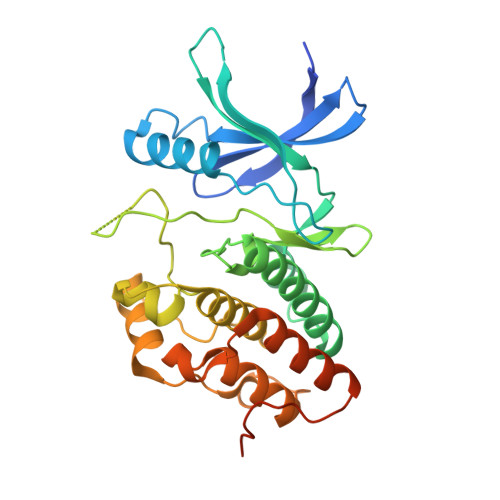Allosteric activation mechanism of the Mycobacterium tuberculosis receptor Ser/Thr protein kinase, PknB.
Lombana, T.N., Echols, N., Good, M.C., Thomsen, N.D., Ng, H.L., Greenstein, A.E., Falick, A.M., King, D.S., Alber, T.(2010) Structure 18: 1667-1677
- PubMed: 21134645
- DOI: https://doi.org/10.1016/j.str.2010.09.019
- Primary Citation of Related Structures:
3ORI, 3ORM, 3ORO - PubMed Abstract:
The essential Mycobacterium tuberculosis Ser/Thr protein kinase (STPK), PknB, plays a key role in regulating growth and division, but the structural basis of activation has not been defined. Here, we provide biochemical and structural evidence that dimerization through the kinase-domain (KD) N-lobe activates PknB by an allosteric mechanism. Promoting KD pairing using a small-molecule dimerizer stimulates the unphosphorylated kinase, and substitutions that disrupt N-lobe pairing decrease phosphorylation activity in vitro and in vivo. Multiple crystal structures of two monomeric PknB KD mutants in complex with nucleotide reveal diverse inactive conformations that contain large active-site distortions that propagate > 30 Å from the mutation site. These results define flexible, inactive structures of a monomeric bacterial receptor KD and show how "back-to-back" N-lobe dimerization stabilizes the active KD conformation. This general mechanism of bacterial receptor STPK activation affords insights into the regulation of homologous eukaryotic kinases that form structurally similar dimers.
Organizational Affiliation:
Department of Molecular and Cell Biology, QB3 Institute, University of California, Berkeley, CA 94720-3200, USA.
















